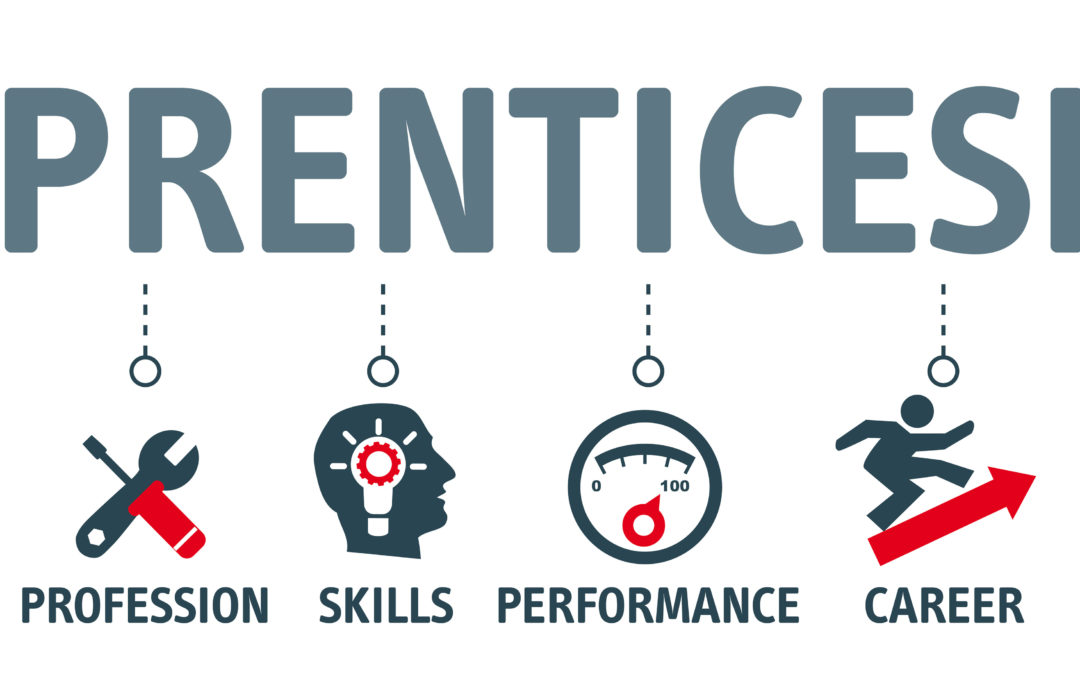National Apprentice Week takes place from 7 to 13 February 2022. As ever, the week will raise the profile of apprenticeships and showcase the difference they can make to companies and individuals. So if you’ve been considering taking on an apprentice but are yet to take the plunge, what do you need to know?

What is an apprenticeship?
For apprentices it’s a way to combine training and skills development with paid employment. For employers, it’s a way to develop your workforce whilst moulding your new recruits to your way of working.
Is there an age limit for apprentices?
Any apprentice you take on must be over 16. There is no upper age limit, and (theoretically, at least) there’s nothing to stop someone becoming an apprentice in later life. Practically, the apprentice wage may not be suitable for someone who may have more financial commitments than the typical 16 year old, but that’s the only thing stopping them.
Are there apprenticeships for my industry?
You’d be surprised just how wide ranging the types of available apprenticeship are. From quantity surveyors to abattoir workers, AI data specialists to accountants, and at levels from GCSE to master’s degree, there is a huge amount available and there should be something appropriate to your sector.
You can find a complete list of apprenticeship courses here.
What if there’s nothing available in an area of particular interest to you? Even here, we know clients who have worked with their local academic institutions to develop ad-hoc apprenticeship programmes. It’s certainly worth talking to your local college, university or apprenticeship provider. You can also ask for help from the apprenticeship service.
How do we take on an apprentice?
First, you’ll need to set up an account. Assuming your annual payroll is under £3 million, you’ll need to start by setting up your PAYE reference scheme. Then you’ll need to register an account with the apprenticeship service.
Once your account is active you’ll be able to find apprentices, courses and course providers through the scheme. You’ll also use your account to give feedback on the training, give training providers authority to act on your behalf in some instances and, crucially, access and manage apprenticeship funding.
How do you fund your apprentices?
There are different rules for employers with payroll values above and below £3 million. For the purposes of this piece, we’re assuming you business has a payroll below £3 million.
For all new apprentices, you will pay 5% towards the cost of their training. The government will pay the rest up to the funding band maximum. If the cost of training will exceed the government band maximum you’ll be expected to pay the difference.
How much should I pay apprentices?
There’s a National Minimum Wage for apprentices aged under 19 or who are over 19 but in the first year of their apprenticeship. The 2021/22 apprentice rate is £4.30, increasing in 2022/23 to £4.81.
Apprentices aged 19 or over who are not in their first year of the apprenticeship should be paid the minimum wage for their age.
What other incentives are there for employers to take an apprentice?
Frustratingly, employer incentive payments which have been extended throughout the pandemic have ended, virtually in time for National Apprentice Week.
Employers can, however, take advantage of a single £1,000 incentive payment for taking apprentices who have been in the care of a UK local authority. There’s further support for employers with fewer than 50 members of staff. In certain conditions, you may be able to have the full cost of training covered by the government, rather than the standard 95%.
Find those conditions (and much more information) in the latest ‘Apprenticeship funding rules and guidance for employers’.
For managed payroll services get in touch today. Contact us.

